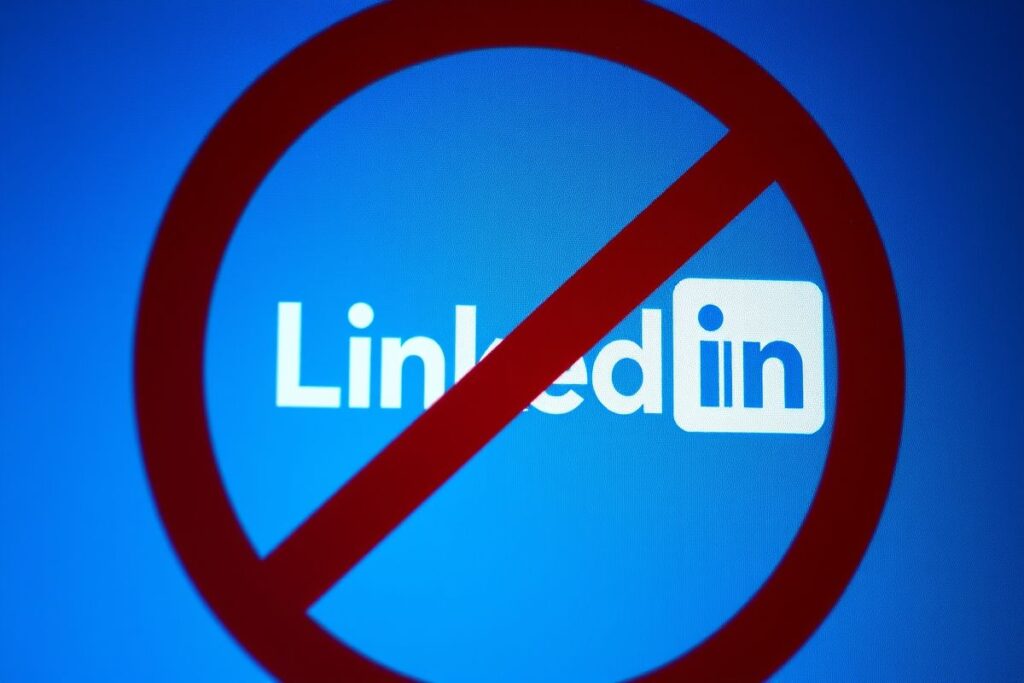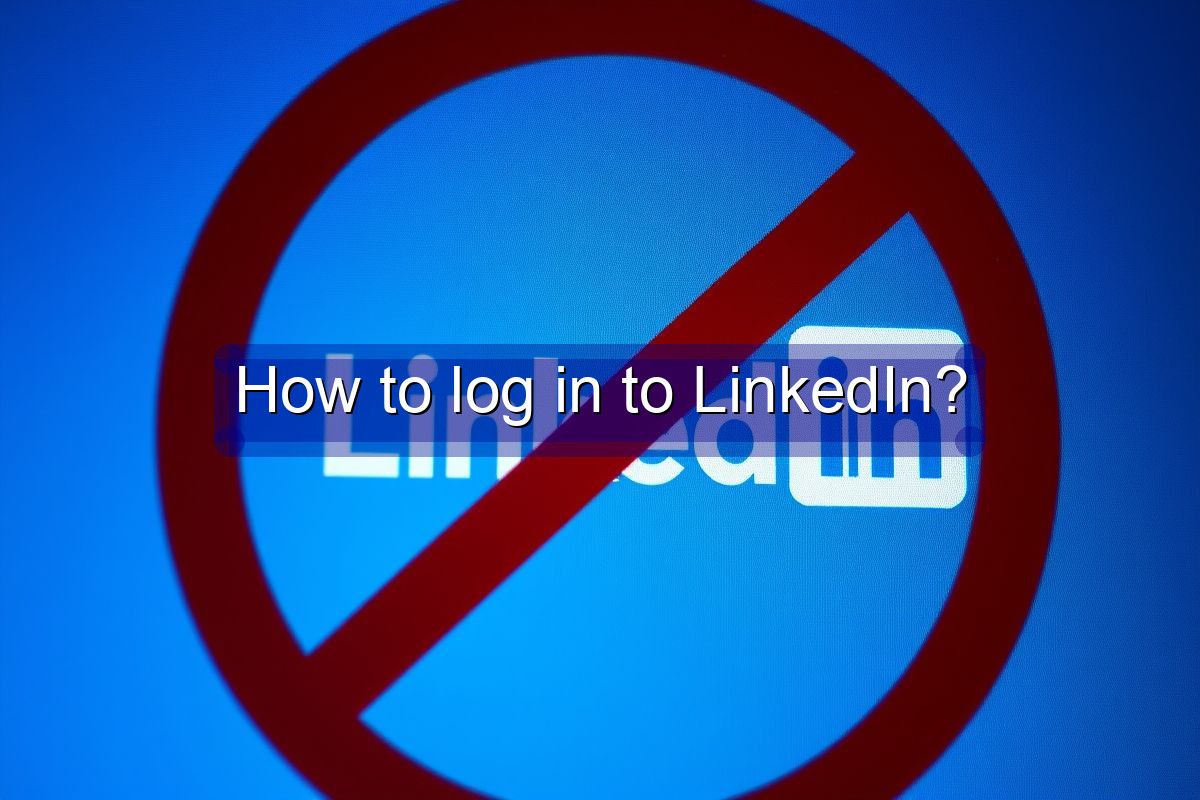“`html
Accessing Your Professional World: A Guide on How to Log In to LinkedIn

In today’s interconnected world, LinkedIn stands as a cornerstone of professional networking, career development, and industry insights. Whether you’re seeking new opportunities, connecting with colleagues, or staying abreast of the latest trends, knowing how to log in to LinkedIn is your gateway to a vast and valuable professional universe. This comprehensive guide will walk you through the various methods of accessing your LinkedIn account, ensuring a seamless and secure experience. From the standard username and password approach to utilizing single sign-on options and troubleshooting common login issues, we’ve got you covered. Mastering the login process is the first step towards leveraging the full potential of LinkedIn’s powerful platform, enabling you to build your brand, expand your network, and advance your career.
Navigating the digital landscape can sometimes feel overwhelming, but logging into LinkedIn doesn’t have to be a daunting task. By understanding the different login options available and familiarizing yourself with the troubleshooting steps, you can confidently access your account and unlock the wealth of resources and connections that LinkedIn offers. This guide is designed to empower you with the knowledge and skills necessary to effortlessly log in, regardless of your technical expertise. So, let’s dive in and explore the various pathways to accessing your LinkedIn profile and engaging with the global professional community.
Understanding the Standard Login Procedure
Username and Password Essentials
The most common method for accessing your LinkedIn account involves using your registered email address or phone number as your username and entering your chosen password. This process is straightforward and generally reliable, but it’s crucial to ensure that you’re entering the correct credentials. Double-check for typos or accidental capitalization, as these can often be the culprit behind login failures. Remember, your email address or phone number serves as your unique identifier within the LinkedIn system, linking your profile to your account. Therefore, accuracy is paramount when entering this information.
Once you’ve confirmed the accuracy of your username, the next step is to carefully enter your password. Passwords are case-sensitive, so be mindful of uppercase and lowercase letters. If you’re prone to forgetting passwords, consider using a password manager to securely store and automatically fill in your credentials. This can save you time and frustration, especially if you have multiple online accounts. Additionally, it’s advisable to regularly update your password to enhance your account security and protect it from unauthorized access. A strong password should be a combination of uppercase and lowercase letters, numbers, and symbols, making it difficult for others to guess or crack.
For enhanced security, LinkedIn offers the option to enable two-factor authentication (2FA). This adds an extra layer of protection to your account by requiring you to enter a verification code sent to your phone or email in addition to your password. While it may add a slight inconvenience to the login process, 2FA significantly reduces the risk of your account being compromised, even if someone manages to obtain your password. Consider enabling 2FA for peace of mind and to safeguard your professional identity on LinkedIn.
Troubleshooting Common Login Issues
Despite your best efforts, you may occasionally encounter issues when trying to log in to your LinkedIn account. One of the most common problems is forgetting your password. Fortunately, LinkedIn provides a straightforward password recovery process. Simply click on the “Forgot password?” link on the login page and follow the instructions to reset your password. You’ll typically be asked to verify your identity by entering your email address or phone number, and then you’ll receive a link or code to create a new password. Choose a strong and unique password that you can easily remember, or use a password manager to store it securely.
Another potential issue is entering incorrect login credentials too many times. LinkedIn may temporarily lock your account as a security measure to prevent unauthorized access. If this happens, you’ll need to wait for a certain period of time before attempting to log in again. Alternatively, you can contact LinkedIn’s support team for assistance in unlocking your account. Be prepared to provide information to verify your identity, such as your full name, email address, and phone number.
Technical glitches can also sometimes interfere with the login process. If you’re experiencing persistent login problems, try clearing your browser’s cache and cookies. These temporary files can sometimes cause conflicts with website functionality. Additionally, ensure that you’re using the latest version of your web browser or the LinkedIn mobile app. Outdated software may have compatibility issues that prevent you from logging in. If all else fails, try accessing LinkedIn from a different device or network to rule out any device-specific or network-related problems.
Exploring Alternative Login Methods
Leveraging Single Sign-On (SSO) Options
In addition to the standard username and password login, LinkedIn offers the convenience of Single Sign-On (SSO) options. This allows you to log in to your LinkedIn account using your credentials from other platforms, such as Google or Apple. SSO can streamline the login process and eliminate the need to remember yet another password. If you’ve previously linked your LinkedIn account to one of these platforms, simply click on the corresponding button on the login page and follow the prompts to authenticate your identity. This method is particularly useful if you frequently use these platforms and prefer a seamless login experience.
Using SSO can also enhance your account security, as it relies on the security measures implemented by the linked platform. For example, if you use Google’s 2-Step Verification, your LinkedIn account will also benefit from this added layer of protection when you log in via Google. However, it’s important to ensure that you trust the security of the linked platform, as a compromise of that account could potentially compromise your LinkedIn account as well. Carefully consider the security implications before linking your LinkedIn account to any third-party platform.
If you’re having trouble logging in with SSO, double-check that your LinkedIn account is properly linked to the platform you’re trying to use. You may need to re-authenticate your account or grant LinkedIn permission to access your profile information. Additionally, ensure that you’re using the correct email address or phone number associated with your LinkedIn account. If you’re still experiencing issues, contact LinkedIn’s support team for assistance.
Utilizing the LinkedIn Mobile App
For users who prefer to access LinkedIn on the go, the LinkedIn mobile app provides a convenient and user-friendly experience. The app is available for both iOS and Android devices and offers a streamlined login process. You can log in to the app using your email address or phone number and password, or you can utilize SSO options if you’ve previously linked your account to Google or Apple. The app also supports biometric authentication, such as fingerprint or facial recognition, for even faster and more secure login.
The LinkedIn mobile app offers several advantages over accessing LinkedIn through a web browser on your mobile device. The app is optimized for mobile screens, providing a more intuitive and responsive interface. It also allows you to receive push notifications for important updates, such as new connection requests, messages, and job alerts. Additionally, the app can seamlessly integrate with your device’s contacts and calendar, making it easier to connect with colleagues and stay organized.
If you’re having trouble logging in to the LinkedIn mobile app, ensure that you have the latest version installed. Outdated versions may have compatibility issues or security vulnerabilities. Additionally, check your device’s internet connection to ensure that you have a stable and reliable connection. If you’re still experiencing problems, try clearing the app’s cache and data or reinstalling the app altogether. If all else fails, contact LinkedIn’s support team for assistance.
Securing Your LinkedIn Account
Beyond just knowing how to log in to LinkedIn, maintaining a secure account is paramount for protecting your professional identity and data. Strong passwords, two-factor authentication, and vigilance against phishing attempts are essential practices. Regularly review your account settings to ensure your information is accurate and your privacy settings are aligned with your preferences. By taking proactive steps to safeguard your account, you can enjoy the benefits of LinkedIn without compromising your security.
| Security Tip | Description |
|---|---|
| Strong Password | Use a combination of uppercase and lowercase letters, numbers, and symbols. |
| Two-Factor Authentication | Enable 2FA to require a verification code in addition to your password. |
| Phishing Awareness | Be cautious of suspicious emails or messages asking for your login credentials. |
| Privacy Settings | Review and adjust your privacy settings to control who can see your profile and activity. |
Conclusion
Mastering how to log in to LinkedIn is the foundational step towards unlocking the platform’s vast potential for professional growth and networking. Whether you prefer the traditional username and password method, the convenience of SSO, or the mobility of the LinkedIn app, understanding the various login options empowers you to access your account seamlessly and securely. Remember to prioritize account security by choosing a strong password, enabling two-factor authentication, and staying vigilant against phishing attempts. By following the guidelines outlined in this comprehensive guide, you can confidently navigate the login process and leverage LinkedIn’s powerful tools to advance your career and connect with the global professional community. So, log in, engage, and unlock the opportunities that await you on LinkedIn.
Frequently Asked Questions
“`
